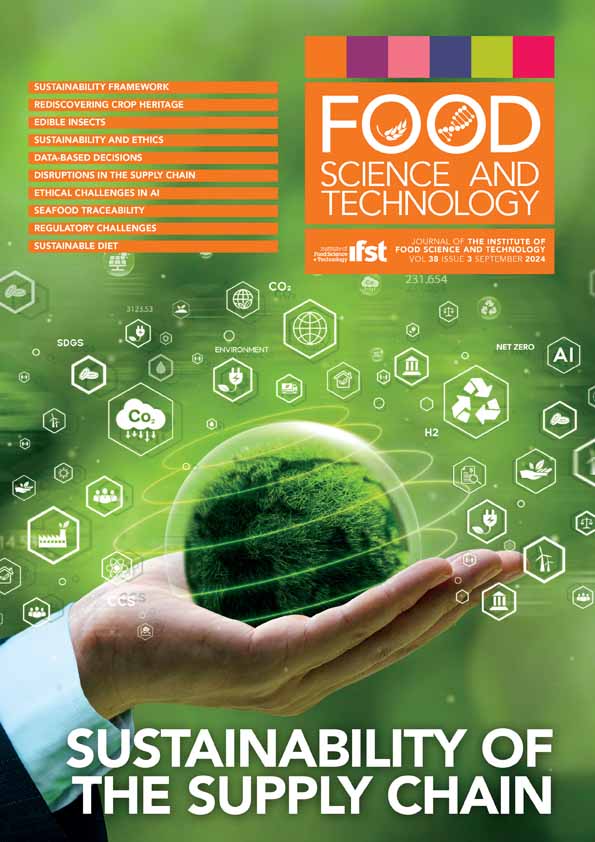Ideal concentration of turmeric to be added to artisanal cassava flour according to consumer preference
Q2 Agricultural and Biological Sciences
引用次数: 0
Abstract
In the artisanal manufacture of yellow cassava flour, in the North region of Brazil, it is common to add turmeric. However, there are no recommendations on this process considering the preference of consumers. The present study proposes to determine this ideal concentration of turmeric that should be added to cassava flour based on consumers’ preference. Samples were produced with 0, 0.05, 0.10, 0.15, and 0.20% concentrations of turmeric in the flour. The flours were evaluated for moisture, ash, ether extract, fiber, protein, acidity, pH, aw, and instrumental color. Sensory evaluation was analyzed in the cities of Rio Branco and Cruzeiro do Sul, state of Acre, Brazil. The addition of turmeric promoted an increase in acidity and a reduction in moisture and water activity of the flours. The intensity of the yellow color increased as higher concentrations of turmeric were added. Sensory tests using the hedonic, ideal, and purchase intention scales and internal preference mapping revealed differences between the two municipalities in terms of preference of consumers. In Rio Branco, there was a preference for flours with intermediate concentrations of turmeric, from 0.05 to 0.15%, while Cruzeiro do Sul recommended a concentration of 0.05% of turmeric.根据消费者喜好在手工木薯粉中添加姜黄的理想浓度
在巴西北部地区手工制作黄木薯粉时,通常会加入姜黄。然而,考虑到消费者的偏好,目前还没有关于这一工艺的建议。本研究建议根据消费者的喜好来确定木薯粉中应添加的姜黄的理想浓度。生产的样品中姜黄的浓度分别为 0、0.05、0.10、0.15 和 0.20%。对面粉的水分、灰分、醚提取物、纤维、蛋白质、酸度、pH 值、aw 值和仪器色度进行了评估。在巴西阿克里州的 Rio Branco 市和南克鲁赛罗市进行了感官评估分析。加入姜黄后,面粉的酸度增加,水分和水活性降低。姜黄的添加浓度越高,黄色的强度越大。使用享乐量表、理想量表、购买意向量表和内部偏好图进行的感官测试表明,两个城市的消费者在偏好方面存在差异。在里奥布朗库市,消费者偏好姜黄浓度在 0.05% 到 0.15% 之间的面粉,而南克鲁塞罗市则推荐姜黄浓度为 0.05%。
本文章由计算机程序翻译,如有差异,请以英文原文为准。
求助全文
约1分钟内获得全文
求助全文
来源期刊

Food Science and Technology
农林科学-食品科技
自引率
0.00%
发文量
0
审稿时长
12 weeks
期刊介绍:
Information not localized
 求助内容:
求助内容: 应助结果提醒方式:
应助结果提醒方式:


